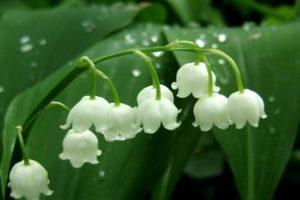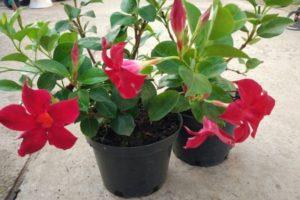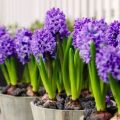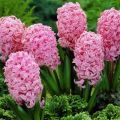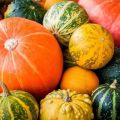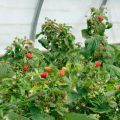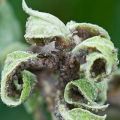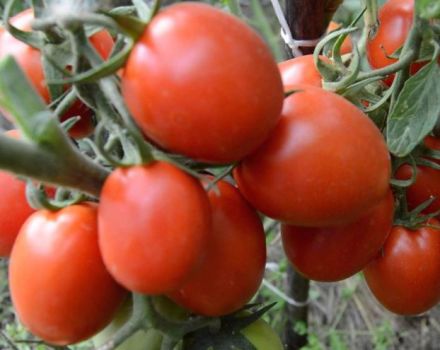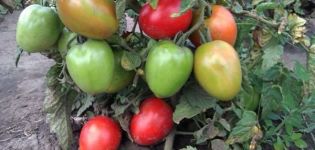How to plant, grow and care for a hyacinth at home in a pot
Hyacinth is akin to tulip, hippeastrum, amaryllis - a bulbous plant, thanks to which you can get a bouquet in early spring without resorting to buying. After all, what is better than a gift, raised with your own hands and received the soul of a grower. Home care for potted hyacinths is not tricky, but without special knowledge, the results may not work. What you need to pay attention to, in what sequence to plant and further care for the plant in order to get the coveted flower.
Content
- 1 Popular varieties and types
- 2 Necessary conditions for germination of hyacinths
- 3 How to choose and prepare bulbs for planting
- 4 How to plant a plant
- 5 How to care for a plant during forcing
- 6 The nuances of leaving after flowering
- 7 What diseases and pests are dangerous for a flower
- 8 Breeding rules
- 9 How long does a hyacinth live in a pot?
Popular varieties and types
Hyacinth is a flowering bulbous plant belonging to the Asparagus family. From ancient Greek, hyacinth is a rain flower. And this is not a myth. The homeland is the south of the Mediterranean, where it blooms during the warm rainy season. Hyacinth can be of various sizes from 30 cm to 45 cm, usually it does not reach high heights. Mainly grown as a houseplant in small pots.
Having several pots in your greenhouse, you can get beautiful panicle flower stalks by the desired date. But it is important to know the rules for distilling a hyacinth flower. Today, the cultivation of such unique species is fashionable: tulips, hyacinths, roses, lilies, if kept indoors and in favorable conditions, will provide beautiful flowers all winter and early spring. In nature, there are three types of hyacinths, which are full of a variety of varieties. The main types are:
- East is perhaps the most popular and widespread hyacinth, which formed the basis of many varieties. Differs in a rare arrangement of flowers on a long thin peduncle. Various colors and pleasant aroma will leave any grower indifferent.
- Litvinova - representatives have wide leaves, low or high peduncles. The color palette is slightly poorer than that of the oriental species and is represented mainly by greenish, purple or blue tones.
- Transcaspian - blue flowers on long peduncles, of which two are formed from one bulb.
All varieties have their own classification, depending on the growth and color of flowers:
- white color: Argentina Andersen (28 cm), Linnosans (26 cm), Carnegie (22 cm), Edelweiss (25 cm);
- blue color: King of the Blues (20 cm), Delft Blue (20 cm), Maria and Miosotis;
- pink: Anna Marie (25 cm), Fondant (20 cm), Pink Pearl, China Pink and Marconi;
- purple: Amethyst (25 cm), Bismarck (30 cm), Menelik;
- yellow color: City of Harlem, Orange Bowen, Yellow Hammer.
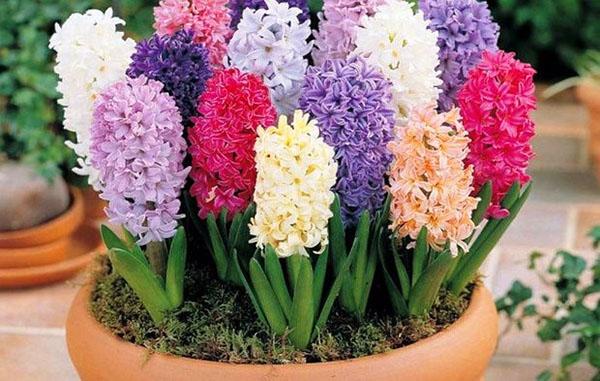
Any of the presented varieties can be determined for distillation as a green pet.
Necessary conditions for germination of hyacinths
It is worth talking about the concept of "distillation" here. What is it and under what conditions is it carried out? Forcing is the acceleration of the process of growth, flowering, maturation of a plant. Basically, the procedure is intended for decorative flowering indoor flowers or when grown in a greenhouse and greenhouses.
The plant is provided with special conditions that allow accelerating cell division, the process of photosynthesis, which makes it grow faster, fills the bulb with nutrients and throws out the peduncle.

In the room where containers with hyacinths are displayed, high humidity, an abundance of light and heat are provided. If there is not enough natural light, light phytolamps are added.
Important! Only the largest and healthiest bulbs are taken for distillation. In this case, the hyacinth will quickly mobilize its strength and accelerate growth.
How to choose and prepare bulbs for planting
To get a peduncle by a certain date, you need to buy high-quality root tubers. It is advisable to buy from trusted suppliers or specialized stores. Planting material must meet the following requirements:
- The product should not show mechanical damage and infectious stains. The color is even, solid.
- The best dimensions are 5 cm in diameter.
- When you feel the bulbs, they should be dense and have some weight, and not create the illusion of an empty ball.
- Before planting, it is important to decide on the variety, since not all are intended for home cultivation.
- The bulb should be smooth with a neck.
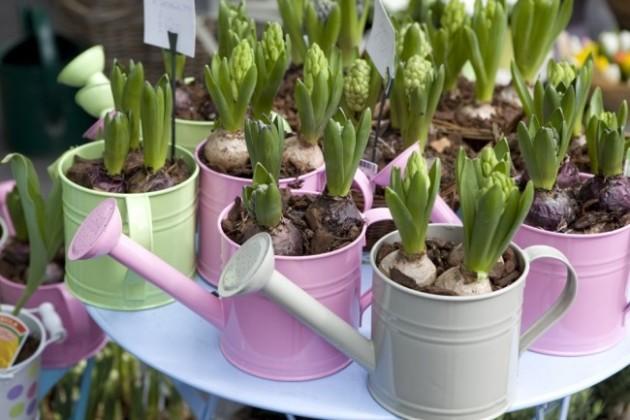
Important! It is better to buy the product at the end of summer, such specimens are already at rest.
Pot and soil selection
This is an important step when planting hyacinths. If the bulb is given freedom, then most likely it will be fruitful to grow, and most importantly, it will not work to wait for the planned flowering. An important nuance when selecting a planting capacity is the tightness for the root system. You need to choose pots (these can be planting containers, small clay pots, flower pots made of plastic) to accommodate one or more bulbs. In store conditions, you can find pots planted with five or more bulbs.

For a single plant, the pot is selected shallow, but wide so that the diameter is 4-5 cm larger than the bulb. If you plant a couple, three copies, there should be a distance of about 2 cm between them. The hyacinth should grow on a good drainage layer, otherwise the root system will rot.
You can plant hyacinths in any soil intended for bulbous plants, after mixing it with sand, or in a soil mixture of peat, garden soil, humus and sand in equal parts.
Location
Their rapid development depends on where the containers with hyacinths will stand. They need an abundance of light, but not direct scorching sunlight. Therefore, the best place in the apartment would be a window sill facing east or west.
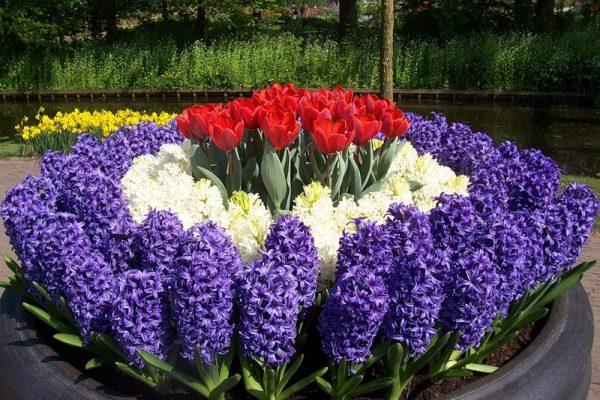
Lighting and temperature control
Diffused light is preferable. If you install pots with bulbs on the south side of the house, then the windows should be shaded. When located north, the hyacinth will take a lot of effort to grow, but not bloom. The optimum forcing temperature for hyacinth is between 15 and 22 degrees with a plus sign. Any deviation from the norm can kill the hyacinth.
Do not place containers near heating devices, since too high a temperature has a negative effect on the plant. It simply won't bloom or the bloom will be weak and short.
Air humidity
Humidity for hyacinth is very significant, but it is impossible to spray the plant superficially, therefore, an open container with water for evaporation is placed next to the pot. Some growers pour pebbles into the pallet and periodically moisten it. The humidity level should be 65%. If this level cannot be reached, special humidifiers are installed.
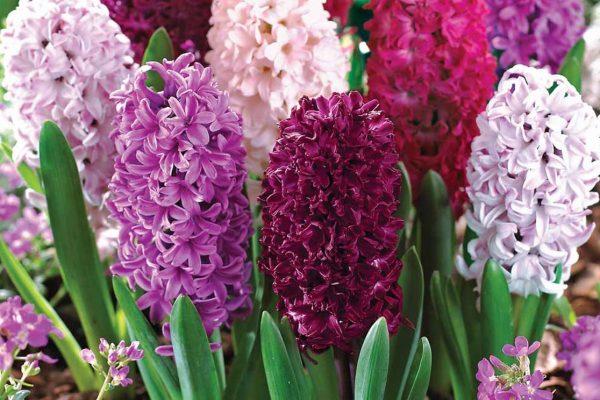
How to plant a plant
The planting containers are filled with soil to the very top, then the bulb is planted.
Landing dates
Planting time depends on the specific date by which you want to bloom. In summer, the bulb is in a dormant period, it is better to plant the planting in the autumn months. It will take 90-100 days from planting to flowering, so it's important to calculate when to plant the bulb.
If planting is carried out in the fall, then the peduncle will appear in winter, at the beginning of spring.
With the help of a simple calculation, you can get a cut or a gift pot by March 8, February 23 and other holidays, you can please people born from January to May.
Digging depth of bulbs
The bulbs are laid out on the surface of the soil or sand. They cannot be buried completely, but only slightly press in with your fingers so that the upper part rises 1.5 cm above the ground. If planted in soil, then the surface after placing the bulbs can be rubbed with sand, this will prevent the appearance of pathogenic microbes.
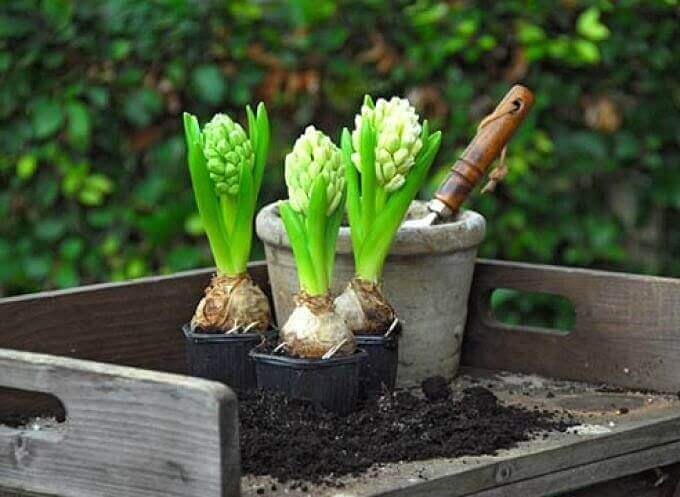
Then the soil is slightly moistened, the pots are wrapped in opaque polyethylene and put away in a cool, dark place. So the hyacinth should stand for about 2 months. Every time you need to monitor its condition. After a five-centimeter sprout appears, the pot is exposed to light and heat.
How to care for a plant during forcing
Many gardeners, for the sake of their experience in growing flowering bulbous crops, assure that hyacinth care will not bring much trouble. The main techniques are: watering and feeding. They do it correctly and in a timely manner.

Watering
Here you need to apply the rules for watering corms. Irrigation should be moderate, but complete drying should not be allowed. It is important that water does not fall on the shoulders of the bulb, in the axils of the leaves and on the bud, therefore it is watered from a small watering can with a narrow hole so that the water supply force is minimal.
The rest of the water from the pan must be poured out so that it does not absorb back and damage the roots.
Fertilizer
After the bud has hatched, the plant is fed. The second time, minerals are applied after the foliage has completely died off. The purpose of dressing is to develop a large and beautiful flower, and in the post-flowering period to provide the bulb with nutrients for the rest period. You can even spray dormant bulbs with a solution of potash-phosphorus fertilizers.
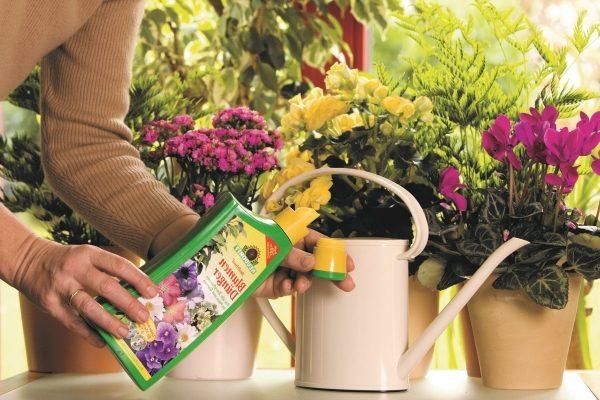
Hyacinth is watered with any mineral complex for flowering ornamental plants. The complex must contain potassium and phosphorus. In addition, the plant is watered with growth stimulants twice a month.
Important! Fertilizer should be diluted according to the instructions attached to the package in compliance with all dosages. It is introduced mainly in the evening after irrigation of the soil.
The nuances of leaving after flowering
After the hyacinth has faded and its peduncle dries up, the plant also needs care, but it has a number of nuances:
- Watering needs to be significantly reduced, one might say, to stop altogether. It is important here that the aboveground part is dry.
- When the green mass has completely faded, it is cut off.
- The bulb is dug out of the soil, cleaned of substrate residues, and the roots are cut off. This procedure falls on June.
- The bulb should be carefully examined for signs of pests and infection.
- The next point is disinfection.
After completing these steps, the hyacinth bulbs are removed for aging in a dark place while maintaining a temperature of 17 degrees.You can save the planting material in the cellar, basement, refrigerator.
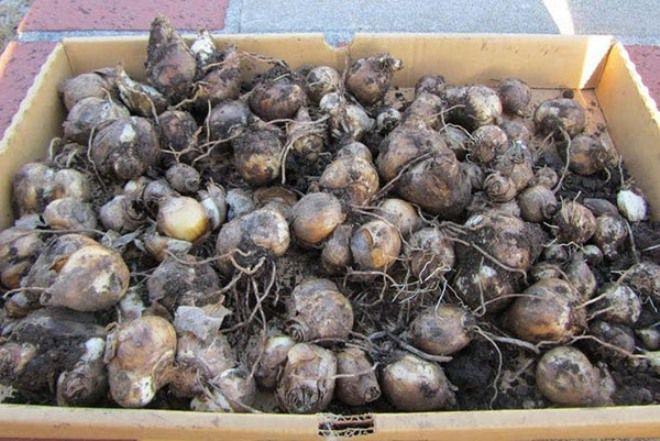
What diseases and pests are dangerous for a flower
In conditions of non-compliance with the growing conditions, hyacinth is exposed to diseases:
- If the pot is located in a draft, strong sun, the leaves may turn yellow.
- Low air humidity, excessive watering, poor-quality soil, lack of drainage cause the entire plant to turn yellow.
- If water gets on the buds during watering, they crumble.
- If during the dormant period the bulb is kept at a temperature above 17 degrees, then the peduncle will be underdeveloped, and the flowers will be clumsy.
- If the hyacinth slopes, is in a wobbly state, then root rot occurs due to waterlogging.
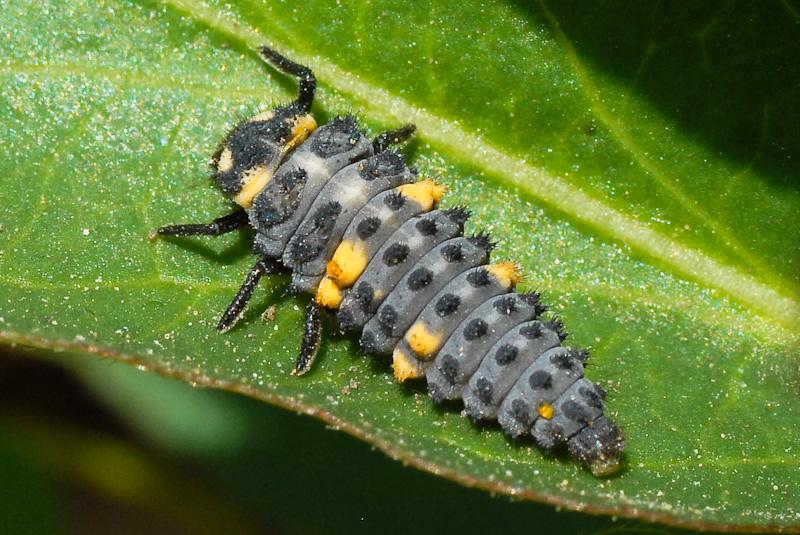
This can be avoided by doing everything right. In addition to such situations, pests may occur, which are thrips, nematodes, aphids. It is enough to carry out the treatment with Fitoverma solution.
Breeding rules
Hyacinth propagates by cuttings and deposition of daughter children. After digging out the hyacinth bulbs to rest, daughter appendages are visible on the mother liquor. They are carefully separated and re-planted in the ground. They grow to full size, carrying out similar care. A young onion is sent to rest after the first flowering.
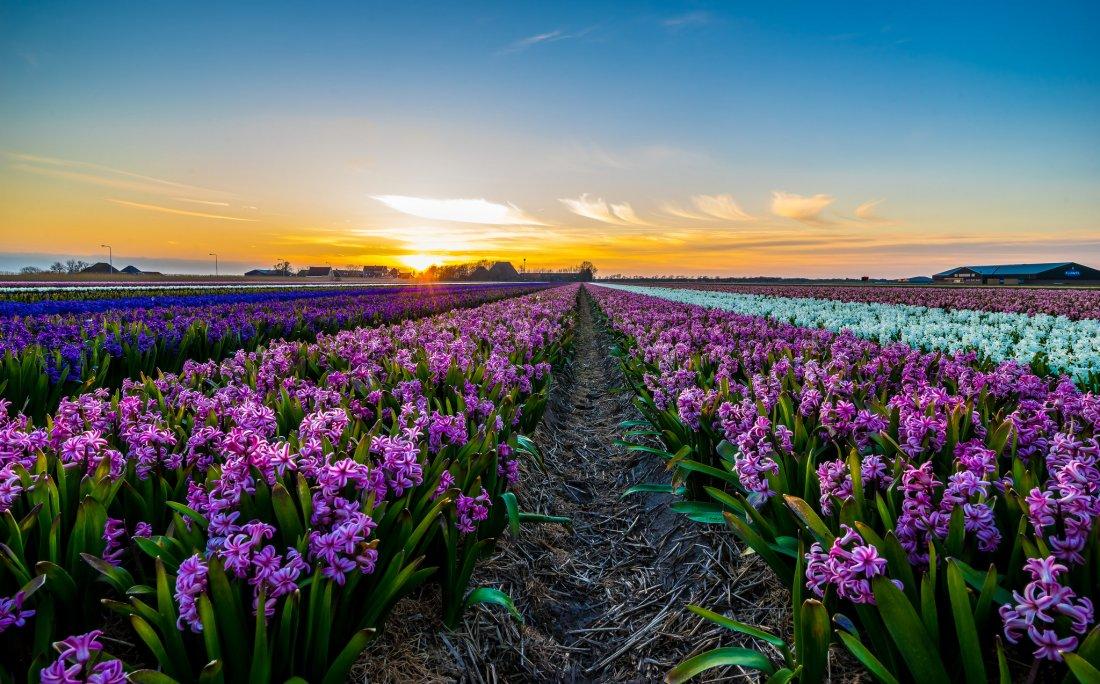
If for any reason no children are formed, a new generation of hyacinths can be reproduced by rooting a leaf plate. After the leaves grow, but always before blooming flowers, they are cut off at the base. The cut is treated with "Kornevin" and then planted in the soil, covered with a film.
The first sprouts will appear after 1.5 months. They should be grown to their normal size, and only after they are dug up for storage.
How long does a hyacinth live in a pot?
The lifespan when forcing in room conditions is rather short. Each time, the bulb becomes obsolete, as artificial conditions accelerating the growth are created for it.
Usually purchased specimens become unusable after the first flowering, but the growers do not allow the bulb to die, cutting off the dried flowers and leaves, and leaving it for growing to allow the bulb to stock up on nutrients.
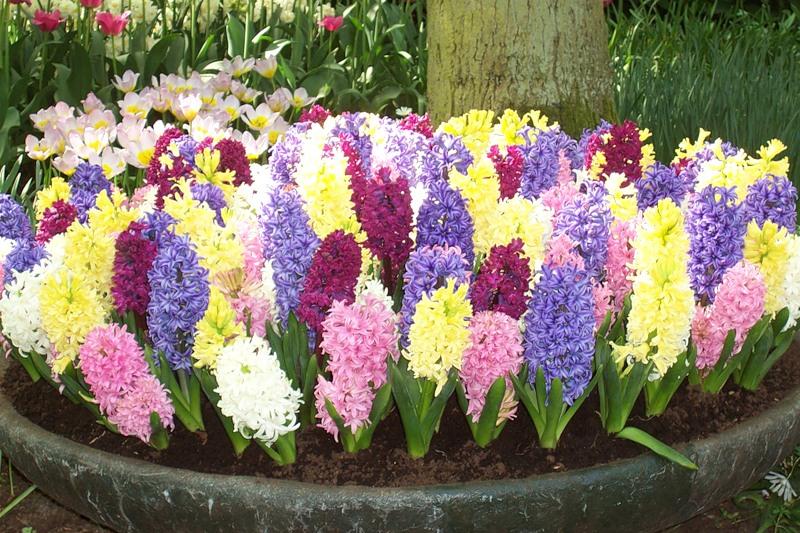
Another option for extending life is planting in open ground in the fall. In this case, the hyacinth will bloom again in the second year. Hyacinths live in nature for a long time, overgrowing with root appendages. Hyacinths are flowering bulbous plants.
It's nice to look at them in the store. A tiny pot, and the flower is twice as large. This effect is achieved by forcing the peduncle. The gift is ideal, but in a home environment, the procedure requires certain knowledge and time, and sometimes it is impossible to achieve such results.
